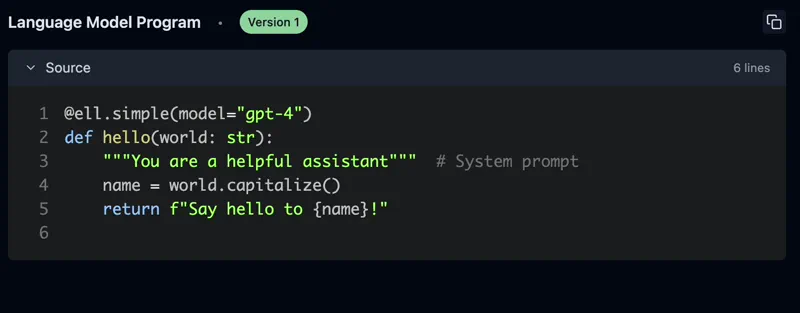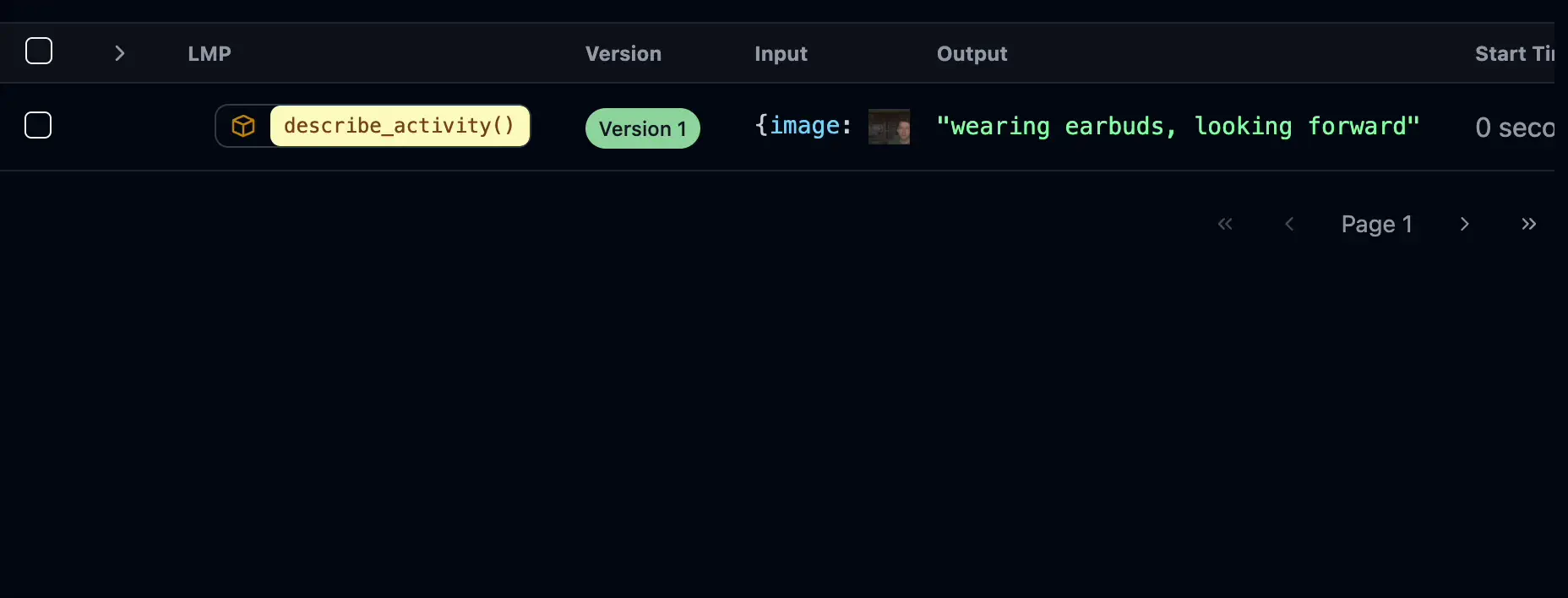
pip install -U "ell-ai[all]"ell is a lightweight, functional prompt engineering framework built on a few core principles:
Prompts aren't just strings; they are all the code that leads to strings being sent to a language model. In ell we think of one particular way of using a language model as a discrete subroutine called a language model program.
import ell
@ell.simple(model="gpt-4o")
def hello(world : str):
"""You are a helpful assistant that writes in lower case.""" # System Message
return f"Say hello to {world[::-1]} with a poem." # User Message
hello("sama")The process of prompt engineering involves many iterations, similar to the optimization processes in machine learning. Because LMPs are just functions, ell provides rich tooling for this process.
ell provides automatic versioning and serialization of prompts through static and dynamic analysis and gpt-4o-mini autogenerated commit messages directly to a local store. This process is similar to checkpointing in a machine learning training loop, but it doesn't require any special IDE or editor - it's all done with regular Python code.
Prompt engineering goes from a dark art to a science with the right tools. Ell Studio is a local, open source tool for prompt version control, monitoring, visualization. With Ell Studio you can empiricize your prompt optimization process over time and catch regressions before it's too late.

ell-studio --storage ./logdir LLMs can process and generate various types of content, including text, images, audio, and video. Prompt engineering with these data types should be as easy as it is with text.
from PIL import Image
import ell
@ell.simple(model="gpt-4o", temperature=0.1)
def describe_activity(image: Image.Image):
return [
ell.system("You are VisionGPT. Answer <5 words all lower case."),
ell.user(["Describe what the person in the image is doing:", image])
]
# Capture an image from the webcam
describe_activity(capture_webcam_image()) # "they are holding a book"ell supports rich type coercion for multimodal inputs and outputs. You can use PIL images, audio, and other multimodal inputs inline in Message objects returned by LMPs.
Read more in the docs!
To install ell and ell studio, you can use pip. Follow these steps:
-
Open your terminal or command prompt.
-
Run the following command to install the
ell-aipackage from PyPI:pip install ell-ai
-
Verify the installation by checking the version of
ell:python -c "import ell; print(ell.__version__)"
This will install both ell and ell studio on your system, allowing you to start using the tools for prompt engineering and visualization.
Explore the documentation to learn more about ell and its features. Follow the Getting Started guide to create your first Language Model Program. Join our Discord community to connect with other users and get support.





